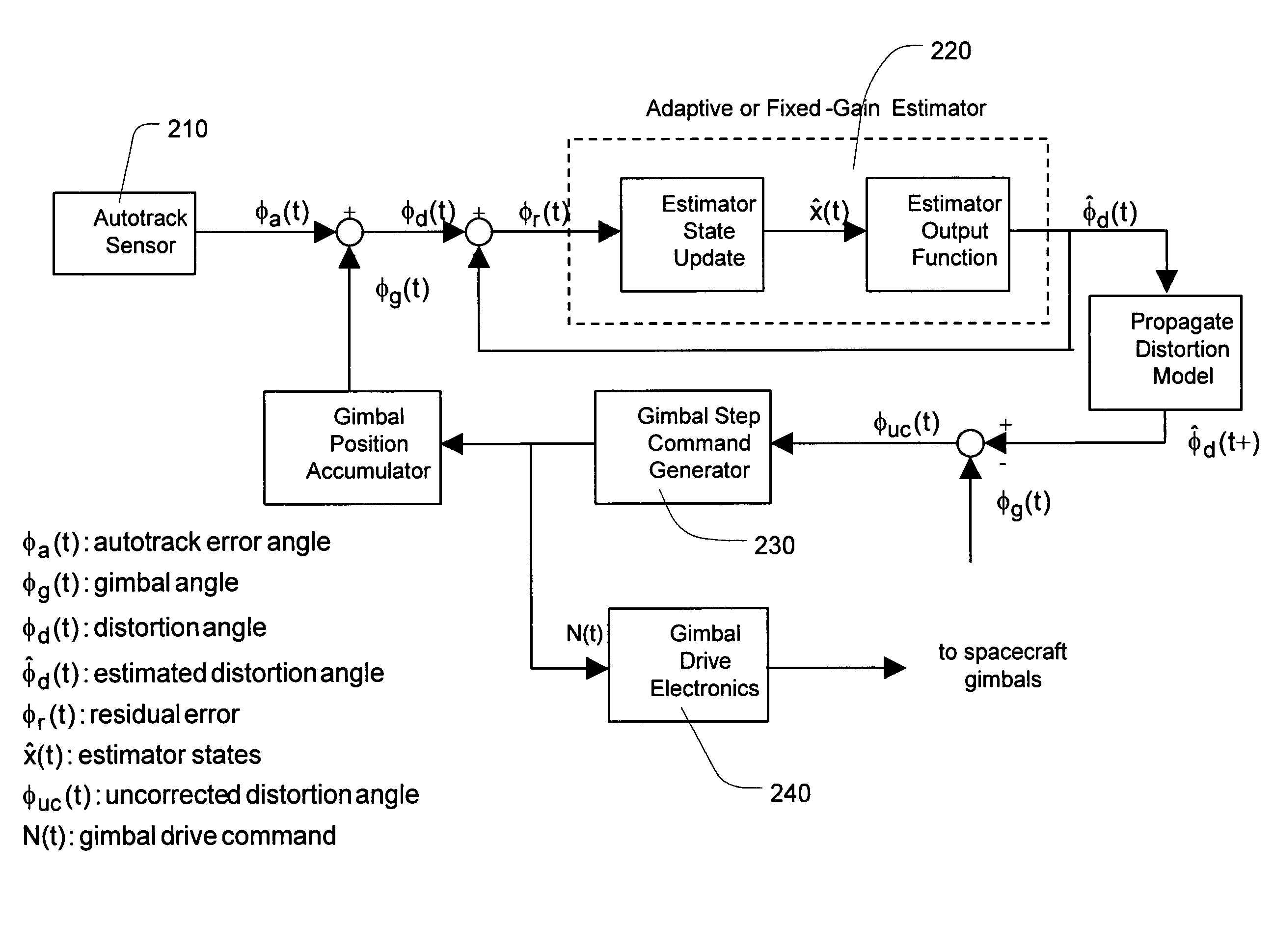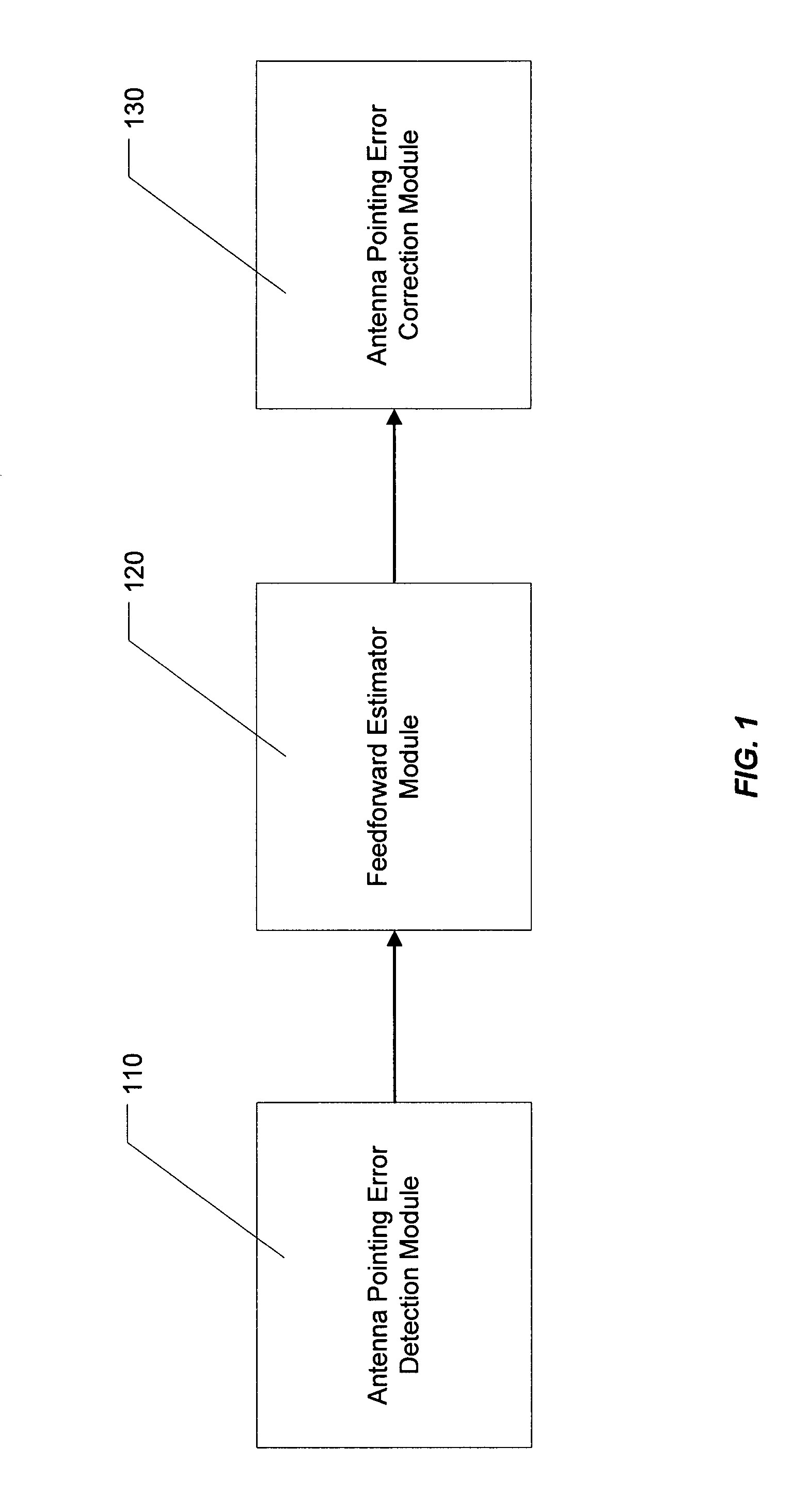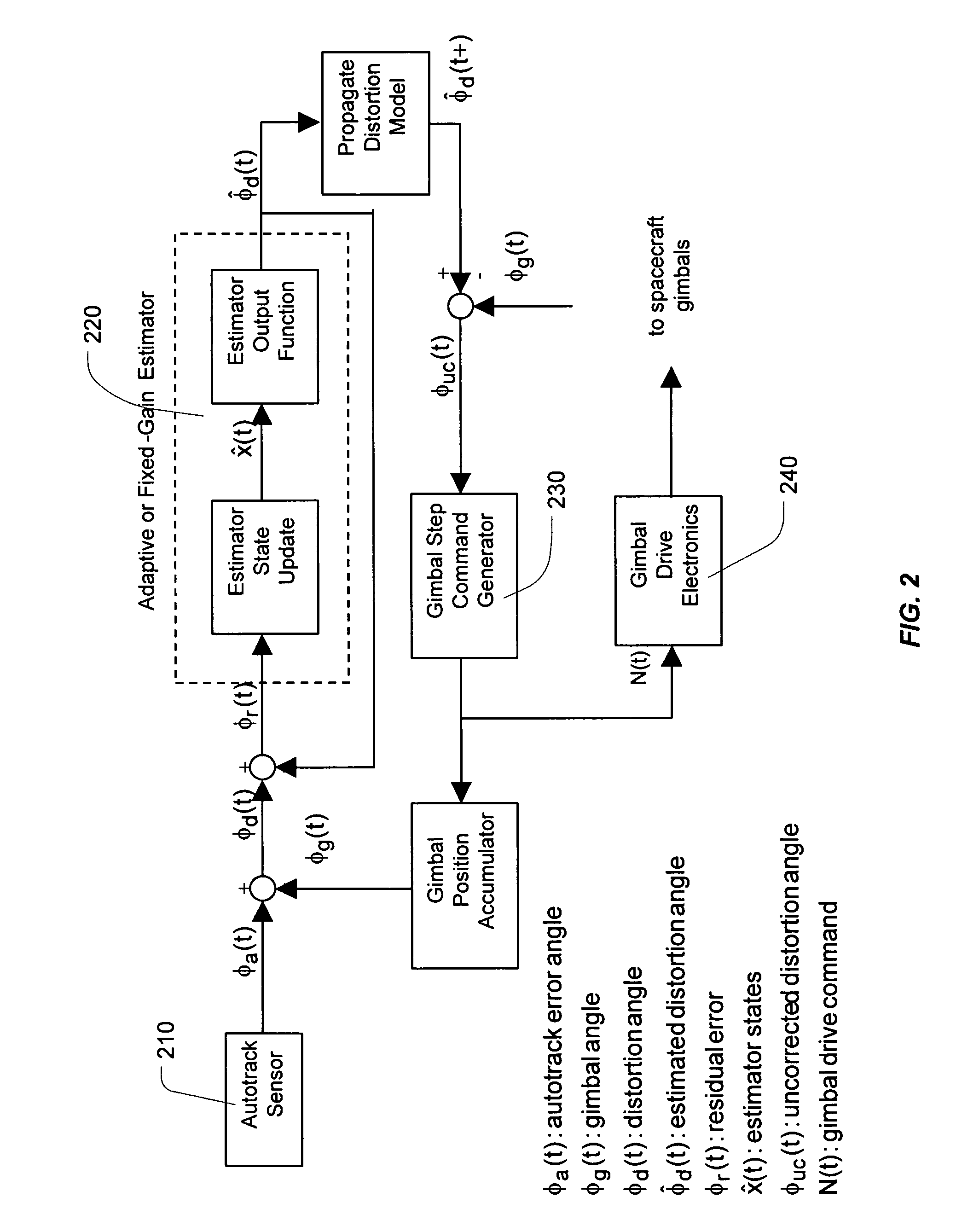Antenna autotrack control system for precision spot beam pointing control
a control system and spot beam technology, applied in the direction of antenna details, antennas, electrical devices, etc., can solve the problems of excessive gimbal stepping, excessive gimbal stepping, and use feedback control strategies, so as to prevent excessive gimbal stepping, improve performance, and improve the effect of 0.01 degrees in total antenna pointing
- Summary
- Abstract
- Description
- Claims
- Application Information
AI Technical Summary
Benefits of technology
Problems solved by technology
Method used
Image
Examples
Embodiment Construction
[0020]FIG. 1 illustrates a block diagram for a system for improving spacecraft antenna pointing accuracy according to the present invention. As shown in FIG. 1, the system according to the present invention comprises antenna pointing detection module (110) for detecting and measuring spacecraft antenna pointing error, feedforward estimator module (120) for learning spacecraft antenna pointing error behavior from the measured spacecraft antenna pointing error and generating a predictive output of estimated future spacecraft antenna pointing error, and antenna pointing error correction module (130) for prospectively correcting spacecraft antenna pointing error based on the predictive output from the feedforward estimator module.
[0021]In contrast to the prior-art feedback control approaches, the present invention takes advantage of the periodic nature of spacecraft antenna pointing error behavior which has the period of 24 hours. As well known to those skilled in the art, the spacecraf...
PUM
 Login to View More
Login to View More Abstract
Description
Claims
Application Information
 Login to View More
Login to View More - R&D
- Intellectual Property
- Life Sciences
- Materials
- Tech Scout
- Unparalleled Data Quality
- Higher Quality Content
- 60% Fewer Hallucinations
Browse by: Latest US Patents, China's latest patents, Technical Efficacy Thesaurus, Application Domain, Technology Topic, Popular Technical Reports.
© 2025 PatSnap. All rights reserved.Legal|Privacy policy|Modern Slavery Act Transparency Statement|Sitemap|About US| Contact US: help@patsnap.com



